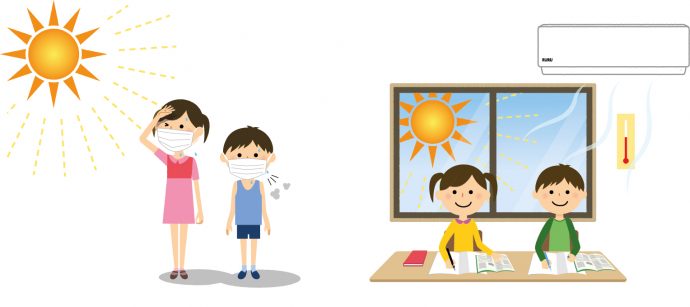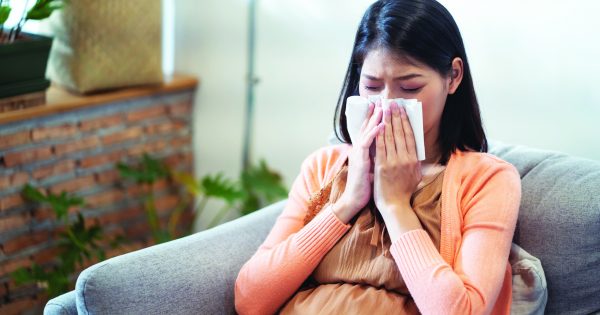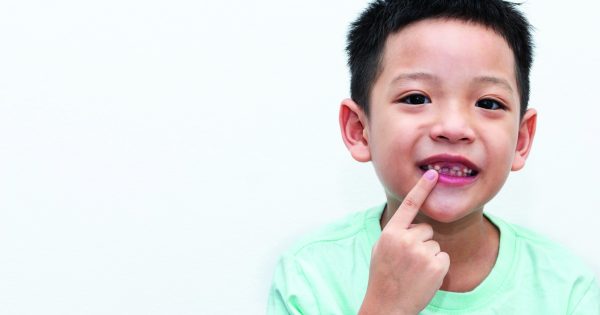The skin is the largest organ in the human body. Compared to adults, children have more delicate, thinner skin. They may face frequent problems such as skin irritation, rashes and dry skin.
The skin also serves several important functions such as forming a barrier (e.g. against bacteria/viruses, moisture loss), allows us to feel sensations (e.g. heat, cold, touch), and helps the body regulate temperature.
Hot, Warm, Cold
Whenever kids are exposed to the weather, their skin is also exposed to heat, humidity, sun, and sudden temperature changes (e.g. from air-con room to hot weather outside). In addition, COVID-19 prevention SOPs still need to be adhered, such as wearing facemasks which increases the humidity underneath it, and using hand sanitisers.
Sensitive skin cannot tolerate drastic changes in weather, e.g. from hot and sweaty to cold and dry. Heat can cause sweat/grime to accumulate in certain areas (e.g. forehead, neck, folds of elbows and knees). It’s also not recommended to experience prolonged exposure to extremes of heat or cold.
Frequent temperature changes between air-con and outdoor environment, may cause kids to encounter these skin problems:
- Prolonged sun exposure: Without proper protection (e.g. sunscreen, UV-resistant clothing), skin irritation and/or sunburn can easily occur. Even when in shade, one can be exposed to the sun via windows, the car windscreen, etc.
Quick tip: Apply sunscreen with a minimum sun protection factor (SPF) of 30 on exposed skin (e.g. neck, face, arms, legs) before going out. Sunscreen comes off easily when rubbed, washed or when one sweats, so reapply again before going outdoors if more than 2-4 hours have passed. For sunburns, use products containing antioxidants, Vitamin A/C/E, and/or furfuryl palmitate. - Use of facemasks: Excessive humidity build up from sweat or moisture from one’s breath may contribute to:
o Rashes: On skin area covered by the facemask.
Quick tip: Clean and wash affected skin area, then gently pat dry. Allow the skin to “breathe” from time to time. Apply a thin layer of petroleum jelly to affected areas (lips) before wearing the facemask (too thick and occlusive on skin might induce acne).
o Acne: Prolonged facemask usage may contribute to acne or pimples, even for children.
Quick tip: For mild acne outbreaks, treatment includes gentle, regular skin care, i.e. topical retinoid, benzyl peroxide. This may necessitate regular intervals of gentle washing. - Use of hand sanitisers: Frequent use helps prevent the spread of COVID-19. While the use of sanitisers containing at least 60% alcohol is recommended, this can dry out the skin.
Quick tip: Use an appropriate amount to sanitise and apply moisturiser immediately after sanitising to prevent the skin from becoming too dry. - Too much cold air: Air-conditioning can make the hot weather more bearable, but it also makes the air drier. Sitting in classrooms or houses with the air-conditioning turned on all day long can dry out the skin and make it itchy.
Quick tip: Cold air tends to be dry, so maintain the air-conditioner’s temperature between 24-26 C. Stay hydrated by drinking at least 6-8 glasses of water a day. At home, use a humidifier in air-conditioned rooms to prevent the air from becoming too dry, or place a bowl of water as an alternative. Use moisturisers frequently to prevent dry skin especially over exposed areas (lip, eyelids and extremities).
Caring for dry/damaged skin
When it comes to skincare for children, it is important to use appropriate skin moisturising products after a shower/bath. Avoid products that contain alkaline pH or known fragrance allergens as they may irritate or sensitise the sensitive skin. Test any new products by applying a small quantity behind the ears (with thinnest skin) and look out for any allergic reactions and/or signs of discomfort after 5-7 days.
The type of moisturising products used also depend on an individual’s skin type and sensitivity, so you may need to test before settling on a suitable one. The most preferred types of moisturisers are:
- Ointment: “Richer” and thicker texture as it has higher oil content. Some children may dislike it because of the oily feeling but it locks in moisture better.
- Lotion: Higher water content and more liquid, it does not have the same oily feeling. Thus, it may not lock in moisture as well as a cream-based moisturiser.
Other skin-friendly ingredients in moisturisers include colloidal oatmeal (fine powder oatmeal) and skincare products containing antioxidant, liquorice extract and prebiotics which help to soothe itchiness and repair the skin microbiome. Generally moisturisers are best applied after a shower to retain moisture, and before bedtime.
Stay alert
A child’s first reaction to itchiness is to scratch. Preventing skin dryness can avert a lot of suffering from itchiness, irritation and constant scratching which may result in broken skin and inflammation. Protecting your child’s skin is something you will need to do 24/7, especially in Malaysia due to the hot and humid weather. Don’t ignore if the skin problems persist and check with your doctor for advice on what to do.
An educational contribution by Malaysian Paediatric Association.







Comments